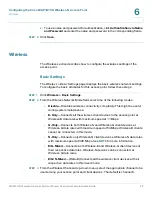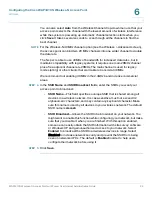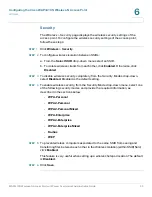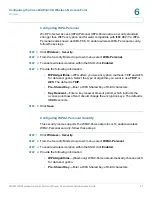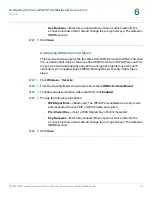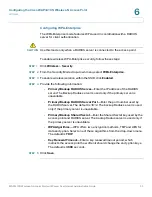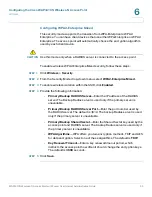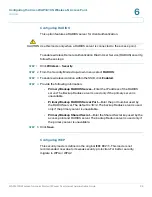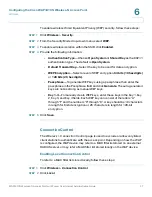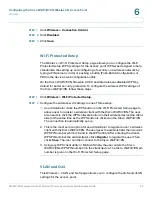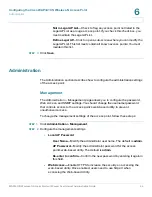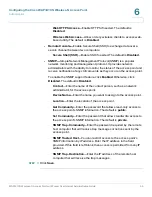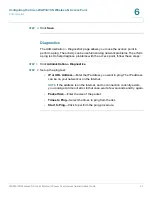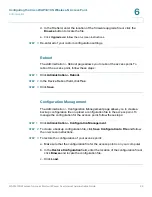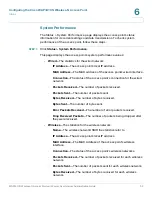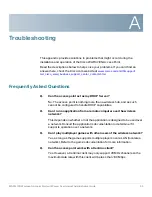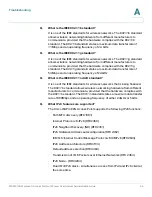
Configuring the Cisco WAP4410N Wireless-N Access Point
Wireless
WAP4410N Wireless-N Access Point with Power Over Internet Administration Guide
41
6
Advanced Settings
The
Wireless > Advanced Settings
page allows you to configure the advanced
wireless and load balancing settings for the access point. The access point uses
several parameters to adjust the channel bandwidth and guard intervals to
improve the data rate. We recommend you let your access point automatically
adjust the parameters for maximum data throughput.
STEP 1
Click
Wireless
>
Advanced
.
STEP 2
In the Options section, configure the following advanced parameters (some only
for Wireless-N) for this access point:
•
Country/Region
—Choose the country for your location from the drop-
down list.
•
Worldwide Mode (802.11d)
—Click
Enabled
to enable this mode. Your
wireless stations must support this mode for this setting to work.
•
Channel Bandwidth
—Select the channel bandwidth for Wireless-N
connections. If you choose
20MHz
, only the 20MHz channel is used. If you
choose
40MHz
, Wireless-N connections use the 40MHz channel, but
Wireless-B and Wireless-G connections still use the
20MHz
channel. The
default is
20MHz
.
•
Guard Interval
—Select a guard interval for Wireless-N connections. The
three options are
Auto
,
Short (400ns)
and
Long (800ns)
. The default is
Auto
.
•
CTS Protection Mode
—Keep the default setting,
Auto
, so the access point
can use this feature as needed when the Wireless-N/G products are not
able to transmit to the access point in an environment with heavy 802.11b
traffic. Select
Disabled
if you want to permanently disable this feature.
This mode boosts the ability of the access point to catch all wireless
transmissions, but severely decrease performance.
•
Beacon Interval
—Enter the frequency interval of the beacon (20–1000).
The default is
100
ms.
A beacon is a packet broadcast by the access point to keep the network
synchronized. A beacon includes the wireless networks service area, the
access point address, the Broadcast destination addresses, a time stamp,
Delivery Traffic Indicator Maps, and the Traffic Indicator Message (TIM).
•
DTIM Interval
—Enter a Delivery Traffic Indication Message (DTIM) interval
(1–255). The default is
1
beacon interval. This means that the Cisco


